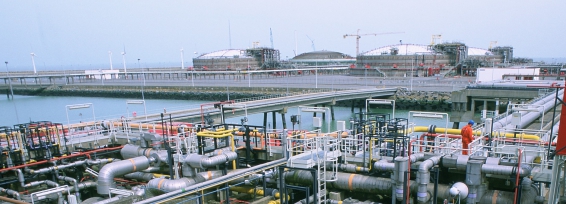China's Gas Demand: a Key Unknown
China's gas demand rose this winter, but until more is known about the underlying causes, European LNG supply forecasts are going to fall within a wide range of possibilities, making it difficult to say with certainty that a wave of LNG will arrive on Europe's shores this year..
Last year European demand for gas rose owing to cold weather and some coal being replaced by gas in the power generation sector. But the increase was met by Russian gas and LNG imports actually fell, leaving many import terminals massively under-used.
A new paper published by the Oxford Institute of Energy Studies, asking whether 2017 will – finally – be the year that sees LNG arrive in volume in Europe, ponders whether other markets might absorb it by being ready to pay more for it, but there is not yet the data to support that view.
Author Howard Rogers says: "The burning question is whether (in particular) China’s recent increased LNG demand this winter is primarily a weather-related phenomenon or the start of a trend towards higher LNG demand based on displacing coal in power, industrial and space heating sectors. The absence of transparent prompt Chinese gas demand data prolongs the uncertainty on this issue."
He concludes: "Summer 2017 Asian demand levels will be a better indicator of which end of the high versus low Asian LNG demand spectrum we are heading towards. This in turn will determine the scale and duration of the LNG ‘glut’ between now and 2021 with significant implications for European hub and LNG spot prices."
He also says that given the less than firm commitment to the growth of gas in many Asian country energy policies, future LNG price levels will be important.
More and more LNG export projects are coming on stream over the next few years, the results of many companies seeing the same opportunity some years ago before the oil price collapsed. These projects cannot be stopped now although some, such as Gorgon and Angola have been hit by problems at commissioning. Others, such as PNG LNG and Sakhalin Energy have been over-performing, partly offsetting the delays elsewhere, he says. Overall, predicted supplies outstripped actual supplies in the last two years but the gap had narrowed by the end of last year.
Not doing roaring trade: Zeebrugge terminal, Belgium

(Credit: William Powell)
Europe and the US were expected to see a surge of LNG deliveries a decade ago from the giant Qatar LNG trains. But in the event, domestic shale gas turned out to be cheaper than LNG imports in the US market, and LNG cargoes went elsewhere – mainly to Asia which had fewer alternative suppliers.
William Powell



